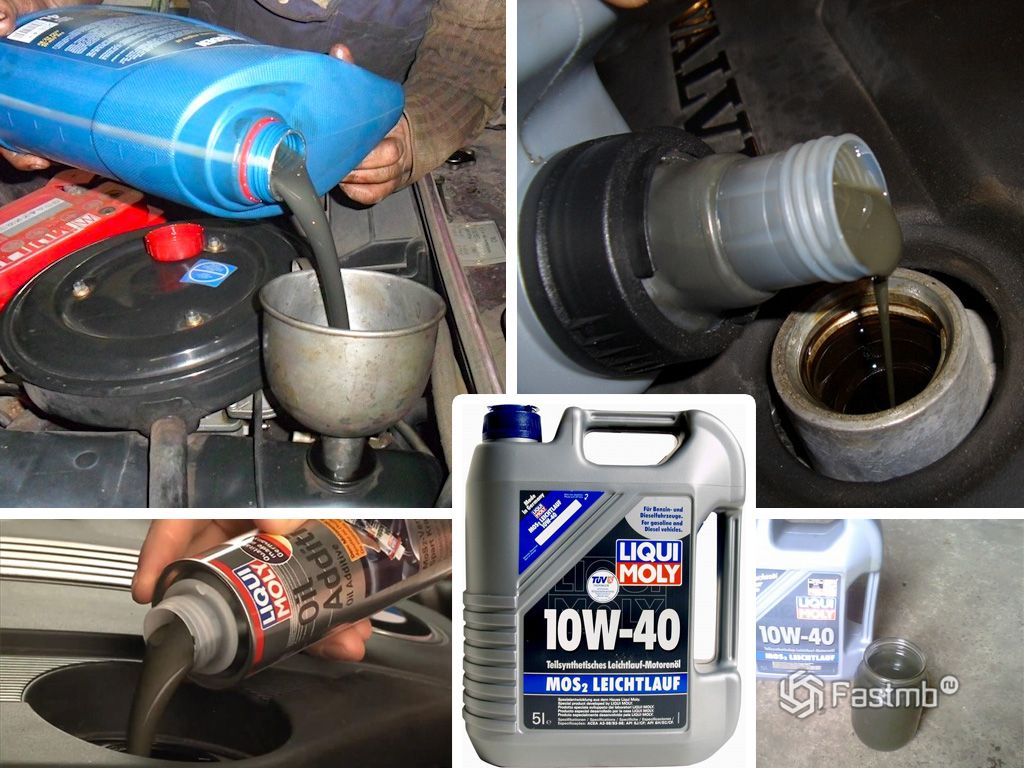
Should I use motor oils with molybdenum?
Content
There are both good and bad reviews about motor oils with molybdenum. Some believe that this additive gives oils excellent qualities. Others say that molybdenum ruins the engine. Still others believe that the mention of the presence of this metal in the composition of the oil is just a marketing ploy and the oil with it is no different from all the others.

What molybdenum is used in motor oils
It is important to know that pure molybdenum has never been used in oils. Only molybdenum disulfide (molybdenite) with the chemical formula MOS2 is used - one molybdenum atom bonded to two sulfur atoms. In real form, it is a dark powder, slippery to the touch, like graphite. Leaves a mark on paper. “Oil with molybdenum” is a common phrase in everyday life, so as not to complicate speech with chemical terms.
Molybdenite particles are in the form of microscopic flakes with unique lubricating properties. When they hit each other, they slide, significantly reducing friction.
What are the benefits of molybdenum
Molybdenite forms a film on the friction parts of the engine, sometimes multi-layered, protects them from wear and serves as an anti-seize agent.
Adding it to motor oils provides a number of significant benefits:
- by reducing friction, fuel consumption is significantly reduced;
- the engine runs softer and quieter;
- when used with high viscosity oils, this additive may, for a short time, but extend the life of a worn engine before overhaul.
These wonderful properties of molybdenite were discovered by scientists and mechanics in the first half of the 20th century. Already in the Second World War, this additive was used on military equipment of the Wehrmacht. Due to the molybdenite film on the critical rubbing parts of engines, for example, the tank could move for some time even after losing oil. This component was also used in US Army helicopters, and in many other places.
When Molybdenum Can Be Harmful
If this additive had only pluses, then there would be no reason to talk about negative points. However, there are such reasons.
Molybdenum, including in the composition of disulfide, begins to oxidize at temperatures above 400C. In this case, oxygen molecules are added to the sulfur molecules, and completely new substances with different properties are formed.
For example, in the presence of water molecules, sulfuric acid can be formed, which destroys metals. Without water, carbide compounds are formed, which cannot be deposited on constantly rubbing parts, but can be deposited in passive places of the piston group. As a result, coking of the piston rings, scuffing of the piston mirror, the formation of slag and even engine failure can occur.
This is supported by scientific research:
- Using the TEOST MHT to Evaluate Fundamental Oxidation in Low Phosphorus Engine Oils (STLE);
- Analysis of Deposit Formation Mechanism on TEOST 33 C by Engine Oil Containing Mo DTC;
- Improving Fuel Economy with MoDTC without Increasing TEOST33C Deposit.
As a result of these studies, it has been proven that molybdenum disulfide, under certain conditions, works as a catalyst for the formation of carbide deposits.
Therefore, oils with such an additive are not recommended for use in engines where the operating temperature in the area of \u400b\uXNUMXboil action is above XNUMX degrees.
Manufacturers thoroughly know the properties of their engines. Therefore, they give recommendations on which oils should be used. If there is a ban on the use of oils with such additives, then they should not be used.
Also, such oil can play a bad service on any engine when overheated above 400C.
Molybdenite is a substance resistant to mechanical stress. Not prone to fading and fading. However, molybdenum oil should not be run beyond the manufacturer's recommended mileage because the main base stock and other additives may be a problem.
How to find out about the presence of molybdenum in engine oil
With fierce competition in the motor oil market, no manufacturer will ruin his business by adding harmful additives to oils. Also, no manufacturer will disclose the composition of their oils in full, because this is a serious industrial secret. Therefore, it is possible that molybdenite is present in different amounts in oils from different manufacturers.
A simple consumer does not need to take the oil to the laboratory to detect the presence of molybdenum. For yourself, its presence can be determined by the color of the oil. Molybdenite is a dark gray or black powder and gives the oils a dark hue.
Since the time of the USSR, the resource of automobile engines has increased several times. And the merit in this is not only automakers, but also the creators of modern oils. The interaction of oils with different additives and car components is studied in the literal sense at the level of atoms. Each manufacturer strives to become the best in a tough fight for the buyer. New compositions are being created. For example, instead of molybdenum, tungsten disulfide is used. Therefore, the catchy inscription "Molybdenum" is just a harmless marketing ploy. And the task of a car enthusiast is to buy original oil (not a fake) from a recommended manufacturer.